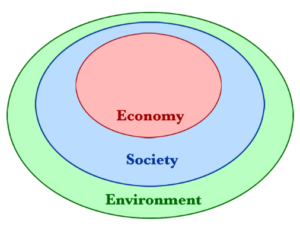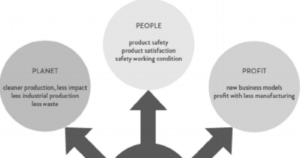Change is not a problem to watch out for. Slow to no adapting to change is the problem. Do you sometimes wonder why there is less business to create a sustainable environment than you might have expected?

Some clues: The Secrets to Building an Innovative Culture
Maybe none at all for long periods of time? We often hear from our clients that things are working; therefore they are reluctant to change.
Your success with building a change and adaptability culture in your business depends not only on coming up with great ideas and making them happen but also with establishing the culture with employees. No business attribute is more important today as that of adaptability, as many, many businesses are on the brink of irrelevance … unless they change as fast as change itself.
You need to have and try many creative business ideas as often as possible … take to heart what Peter Drucker had to say about what you should be doing in 5 years (something different). That is why this needs to be a part of the culture of your business.
It’s also important to recognize that culture of change comes from the people—it is the people. Think about the individuals within your organization—what are their personalities like? Who are they outside of work? What tickles their fancy? All of these things lend to the culture of your organization, and ultimately your success in adapting to change.
We live in a business world accelerating at a dizzying speed and teeming with ruthless competition. As most of the tangible advantages of the past have become commoditized, adaptability has become the currency of success.
A 2010 study of 1,500 CEOs indicated that leaders rank adaptability and creativity as No. 1 leadership attribute needed for prosperity. It’s the one thing that can’t be outsourced; the one thing that’s the lifeblood of sustainable competitive advantage.
And time to adapt and change is getting shorter and shorter. When it is not timely, it can become of little to no value. As Martin Luther King Junior spoke about a half a lifetime ago:
We are now faced with the fact, my friends, that tomorrow is today. We are confronted with the fierce urgency of now. In this unfolding conundrum of life and history, there is such a thing as being too late. Procrastination is still the thief of time. Life often leaves us standing bare, naked, and dejected with a lost opportunity. The tide in the affairs of men does not remain at flood — it ebbs. We may cry out desperately for time to pause in her passage, but time is adamant to every plea and rushes on. Over the bleached bones and jumbled residues of numerous civilizations are written the pathetic words, “Too late.”
https://digitalsparkmarketing.com/creativity-ideas/
Let’s examine eight ways to encourage a timely sustainable culture of adapting to change:

Encourage and incentivize ideas for change
People should be encouraged and inspired to openly and freely share ideas for change. There should be no censorship in the creative process and ideas for change.
Welcome everyone to contribute with their ideas for improving, from the couriers and drivers to the top managers.
The articulate vision of business future
Leadership is on point for a culture of change. To build a sustainable culture of adapting to change, they must articulate their vision of the future for the business. Frequent communication of the vision and its status are essential.
Build an outline of a roadmap for change
Always look for alternatives, improvements, and non-standard ways of solving problems. Many of the ideas that your team will come up with will be unfit, some of them will be excellent, and a few will be brilliant. Sometimes one brilliant idea is all it takes to make a huge business success.
Create a sustainable environment … motivate collaboration

Your employees should feel like members of one big family. They are the biggest assets of your business.
Adapting to change doesn’t often happen in a vacuum. As the author Steve Johnson says, chance favors the connected minds. When people are together, talking, laughing, thinking, exploring — they’re going to throw out ideas.
These ideas trigger something in someone else’s mind, and it snowballs. Before long, this group of folks has developed a creative change that wouldn’t have been possible without the collective collaboration. See our article on employee engagement as a backbone of customer culture.
Don’t fall prey to the myth that only some people are adaptable and you’re not one of the chosen few. We are all adaptable; it’s just a matter of figuring out in what way. So find things you’re curious about and are interesting to you, use your imagination a little, stay motivated and work at it, and surround yourself with others who are doing the same.
Most of the time, you’ve got to want to be adaptable to be adaptable. You’ve got to work at the change to be able to change.
But every once in a while someone will walk into my office, look around at the walls and ask how I came up with some of the ideas. Or we’ll be in a meeting, and something will click for me as I’m scribbling in my little black notebook.
What most people don’t know is that I work on it. Yes and I practice. I think people think you’ve either got it or you don’t, but I think everyone adapts in their way.
So I started doing things to challenge myself to change. Sometimes they were business-related. Other times they weren’t. And now I have an arsenal of things that I do on a regular basis to stretch my mind. It’s trying to do creative thinking and practice a consistent habit.
Fail fast and forward
There is no success without failure. Ask any successful person, and they will confirm that they have failed in life but that their failures made them stronger and even more determined to go on. It is perfectly OK to fail as long as we learn from our own mistakes. Your employees should not fear failure because it will kill their desire to create new and unusual ideas.
In many companies, people are so afraid of making mistakes that they don’t pursue their dreams. The simply follow the rules and keep their heads down, which drives nothing but mediocrity.
James Dyson, the inventor of the Dyson Vacuum cleaner, “failed” at more than 5,100 prototypes before getting it just right. In fact, nearly every breakthrough innovation in history came after countless setbacks, mistakes, and “failures.”
The great innovators and achievers weren’t necessarily smarter or inherently more talented. They simply released their fear of failure and kept trying. They didn’t let setbacks or misfires extinguish their curiosity, imagination, and ability to change.
Failing means taking risks and increasing the rate of experimentation… and exploring. Some bets will pay off; some will fail. The key is to fail quickly. The speed of business has increased dramatically and every minute counts. The best businesses try lots of ideas and let the losers go quickly and with no remorse.
Recognize and reward contribution to change
Employees respond most favorably when you recognize and reward ideas for change. Make the efforts, and you will see the effects.
Communicate new ideas
Give feedback to employees on ideas that have been suggested, whether or not they have been implemented. This gives positive reinforcement to collaboration and ideas for change. It also contributes to creating new ideas.
Celebrate small victories often
Social norms in any culture are established by what is celebrated and what is punished. Consider more narrowly how they function within an institution. Nearly every business’s mission statement includes words about “innovation,” yet risk-taking and change are often punished instead of rewarded. Rewards come in many forms, and often the monetary ones are the least important.
The bottom line
Celebrating change and adaptation is not only about handing out bonus checks for great ideas—although that is a good start. It should also be celebrated with praise (both public and private), career opportunities, and perks. In short, if you want your team to be creative, you need to establish an environment that celebrating their successes.
As you can see, some of these ideas do not take much time and money to implement. Start from small and transform your company step by step. Creating a change and adaptation culture is a process that takes time, but as the first ideas for change become a reality, and the first results show up, both you and your employees will appreciate the positive effects.
Things change. New technologies come along. Leaders fail to adapt, as Clayton Christensen pointed out 17 years ago in “The Innovator’s Dilemma.” But doing nothing only accelerates the downward results.
